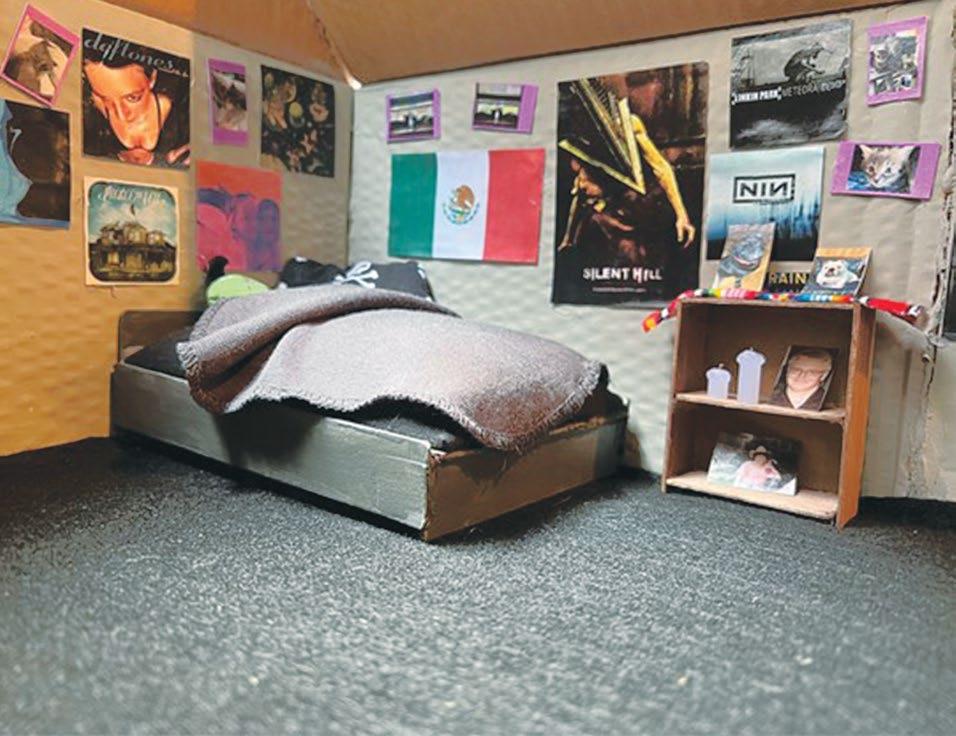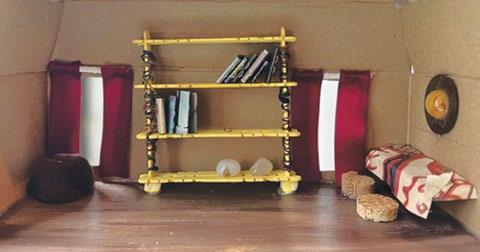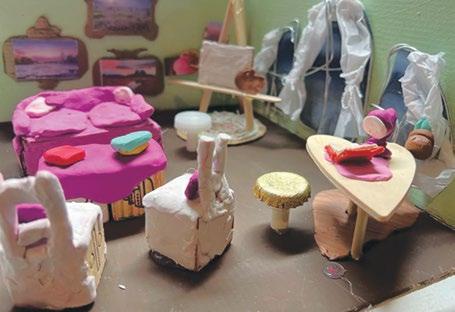
4 minute read
Safe Spaces: IntuiTeens 2022
Photo of Juno’s Safe Space
Safe Spaces: IntuiTeens 2022
By Cielo Aguilera and Courtney Thompson
This past summer, teens from across Chicagoland joined the IntuiTeens, the museum’s summer youth internship program that centers on creativity and celebrating the power of outsider art.
To kick off the program, the cohort reflected on the 2021 IntuiTeens Community Quilt, created in collaboration with the Social Justice Sewing Academy. This activity served as an entrance into the group’s discussions about current issues and the ways these issues connect to the lived experiences and backgrounds of outsider artists. After doing some research, the teens explored, through drawing, personal connections to an artist of their choice.
—Kanchi, 2022 IntuiTeen
Next, the teens visited Weinberg/Newton Gallery to see Key Change, an exhibition focused on housing and land inequity. These activities served as catalysts for profound conversations pertaining to social justice issues, and the teens responded by reimagining their homes and rooms as a means to identify safe spaces for themselves and others in these uncertain times, expanding on the idea of what makes a home “home” for them. They drew upon their knowledge of artists such as Wesley and Ricky Willis, Martín Ramírez, and Emery Blagdon, seeing how these artists focused their work on community, home and healing. The teens also considered the practices and mediums self-taught artists use and how to implement these techniques into their projects: three-dimensional, diorama-like pieces about comfort and healing. Some are based in reality and others are more imaginary, but they portray and reflect the teens’ hopes, desires and personal backgrounds. This project not only encouraged the teens to identify and produce safe spaces but fostered a sense of belonging, encouraging them to take up space, envisioning a future and imagining what is possible.
The concept of reimagining is also at the center of the work of William Estrada, an artist and art educator at the University of Illinois Chicago and Telpochcalli Elementary. Estrada addresses inequity, migration and community in his art—urgently calling for our re-examination of public and private spaces. The IntuiTeens had the opportunity to participate in a printmaking workshop with Estrada after listening to his story and learning more about his art practice.

Photo of Deonna’s Safe Space
In continuation of the summer’s overarching theme of safe spaces, the teens collaborated with Dr. Blair Smith from the University of Illinois Urbana-Champaign, who led a virtual artist talk about what it means to listen as an art form by paying attention to the sounds and voices of a community. Dr. Smith introduced the IntuiTeens to work done by SOLHOT (Saving Our Lives, Hear Our Truths), a youth organization with whom she has performed. SOLHOT was founded by Dr. Ruth Nicole Brown, who had a “vision for a space where Black girls could express, create and make space to be free.” Dr. Smith then demonstrated how she approaches her sound-based work, and the teens formed responses to her “Just Because” prompt.
Here are some of their responses:

Photo of Kanchi’s Safe Space

Photo of Samia’s Safe Space
Later in the program, the teens traveled across town to explore the exhibition Nick Cave: Forothermore at the Museum of Contemporary Art Chicago. Forothermore spans three decades of the artist’s career. The IntuiTeens immersed themselves in the exhibit, which touched on and amplified themes of civic engagement, current social impacts and social justice issues. To conclude the summer, the IntuiTeens participated in critique sessions and prepared artist statements in response to the program’s culminating project: Identifying and (Re)Imagining Safe Spaces: An Exploration of Home:
—Deonna
—Samia
—Juno





